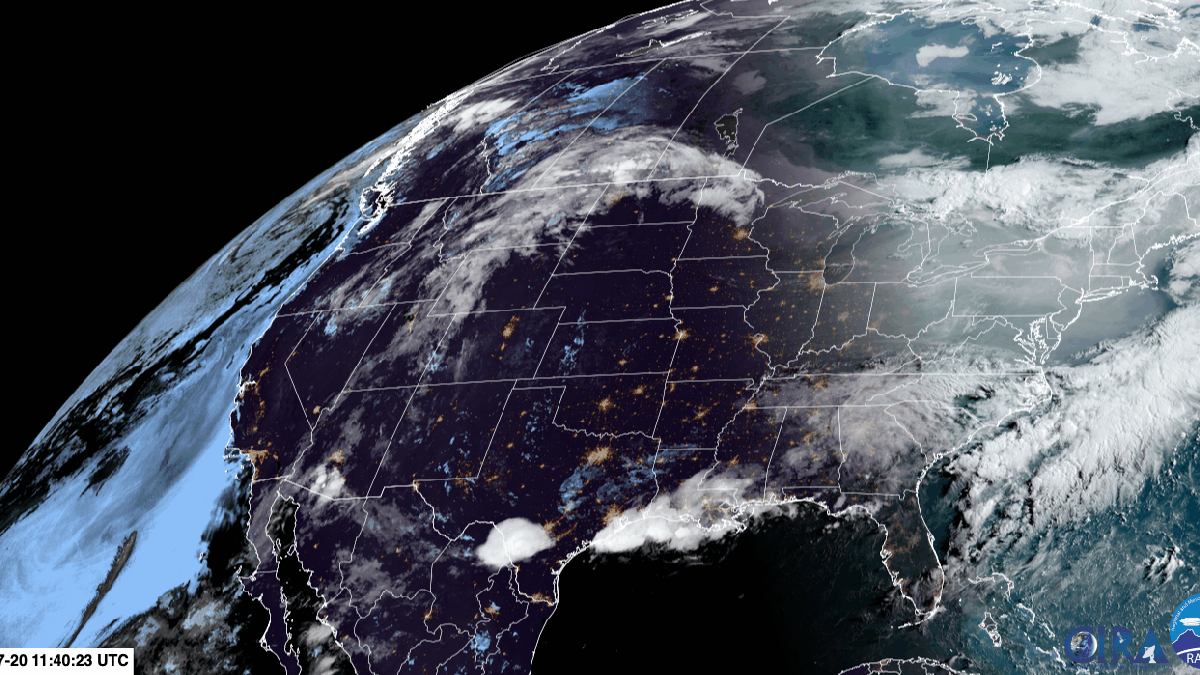Skies Across the U.S. Go Hazy as Wildfire Smoke Spreads Leave a comment
Millions of people across the U.S. and Canada woke up to smoke-choked air on Tuesday. The source: intense wildfires burning thousands of miles away in western North America. Yes, the western wildfires are now everyone’s problem, proving for the millionth time that nobody will be spared from climate change and that the impacts can be seen with our very eyes (and felt in our very sore throats and clogged sinuses).
Monster blazes ignited in Oregon and British Columbia earlier this month, with more fires exploding in California recently. The result has been a thick layer of smoke over the region. But thanks in part to bizarre and extreme fire behavior, that smoke hasn’t just lingered in the area or near the ground. Instead, fires have burned so intensely that they’ve created their own weather and sent smoke climbing tens of thousands of feet into the air.
That smoke has risen to the height of the jet stream, a fast-flowing rush of air in the upper reaches of the atmosphere, and been whisked along like a toxic leaf in a river. A thin streak of it reached as far east as Greenland last week, but the smoke over the eastern half of North America today is on another level thanks to the increasingly out of control fires in the West. Chief among them is the Bootleg Fire, which is ballooning at an alarming rate and that officials have said won’t be contained absent an act of nature in the form of rain or snow. Abnormally fierce fires are also burning in western Ontario and eastern Manitoba, a region normally less fire-prone than the West. All of that is contributed to a taste of the apocalypse on the East Coast.
The telltale signs of smoke were on display across the eastern U.S. on Tuesday morning. The sun rose angry and reddish-orange in locations from Nebraska to New Hampshire. The phenomenon happens because smoke particles absorb blue and other wavelengths of light on the shorter end of the spectrum while letting longer-wave oranges and reds come through. (Dust and other particulate matter can do this, too.) As I write this at 10:30 a.m., the New York sky is blanketed in a dull orange haze with a light hint of end-of-days vibes.

G/O Media may get a commission
Air quality alerts are also in place across the Northeast and parts of the Midwest due to the smoke, and the forecast indicates it could get even worse later on Tuesday. In response, the Pennsylvania Department of Environmental Protection issued a code orange alert. The National Weather Service air quality statement notes that “means that air pollution concentrations within the region may become unhealthy for sensitive groups.” Among those groups are the elderly, children, and those with respiratory problems, including communities of colors often forced to live in the shadow of highways and other polluting infrastructure. Models show the smoke extending as far south as Texas and as far as east as Canada’s Maritimes so this is hardly just a “Coastal Elites Whine About Smoke” situation.
The climate crisis and the smoke are one and the same. Rising temperatures have locked in drought and made forests more prone to large, destructive fires. (Decades of forest mismanagement have played a role, too.) Those fires have wrought havoc in communities living at the urban-wildland interface, and we’ve seen far too many tragedies in recent years. The costs of those fires has also been astronomical from an economic perspective, with billions in lost property and livelihoods. What the smoke and air quality alerts on the Northeast make clear, though, is that there are hidden costs to the climate crisis right now. And they’ll only get worse unless we act to reduce the risks.

